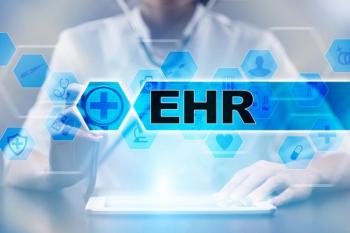
Medical Crowdsourcing Provides Real-Time Help for Docs
The digital age has brought about a whole new age of medical crowdsourcing. Physicians no longer have to wait for a call back.
Communication has always been fundamental to the practice of medicine. From the 1684 publication of the first English-language medical journal (the Medicina Curiosa) to the rise of EHRs, there has been a constant effort and evolution in how we collect, share, and use medical information.
Today, it is well documented that the advent of digital communications and social media is further transforming medical care for both patients and doctors. A few years back, the Pew Internet and American Life Project reported that 72 percent of Internet users looked for health information online
How are these social media developments translating into the doctor’s office and the delivery of care to patients in need? One example is the transformation of the medical consult from a doctor seeking the opinion of a colleague through a one-to-one conversation to a global search for information. We’ve moved from waiting for a colleague to call back to the instantaneous era of “medical crowdsourcing.”
Crowdsourcing is defined by Webster’s as the “practice of obtaining needed services, ideas, or content by soliciting contributions from a large group of people and especially from the online community rather than from traditional employees or suppliers.” Applying this community based approach to medicine allows doctors to engage peers on difficult cases, tapping a wealth of knowledge not just from their own networks but from experts around the globe.
One example of medical crowdsourcing environment is
These constructive conversations represent the modern incarnation of the doctor’s lounge, the place where physicians can come together to share common experiences, learn from peers, and advance their work. While diagnostic and clinical discussions are paramount, the “virtual lounge” of the medical crowdsourcing era also features discussions of the pressures of medical practice, the effect of regulations and even personal matters.
Embracing the medical opportunities afforded by new communications technology is critical to the future of healthcare. Informed patients with better knowledge about their conditions can lead to better adherence to treatments and ultimately improved outcomes. Equally important is informed doctors, sharing the best of their knowledge for the good of patients they may never meet.
Richard A. Armstrong MD FACS is a general surgeon currently practicing at Helen Newberry Joy Hospital in the upper peninsula of Michigan. Dr. Armstrong graduated from the Ohio State University School of Medicine in 1976 and completed postgraduate training in general surgery in 1981 at the Naval Regional Medical Center in Portsmouth, Virginia. After finishing Naval Service, Dr. Armstrong entered private practice in upper Michigan for 18 years. He has been in his current position for 13 years. Dr. Armstrong serves as the. Treasurer of The Docs 4 Patient Care Foundation.
Newsletter
Optimize your practice with the Physicians Practice newsletter, offering management pearls, leadership tips, and business strategies tailored for practice administrators and physicians of any specialty.









